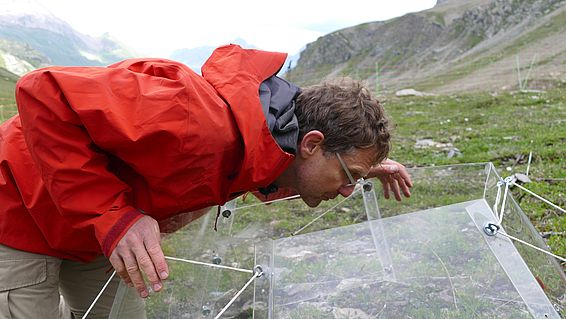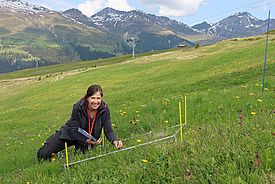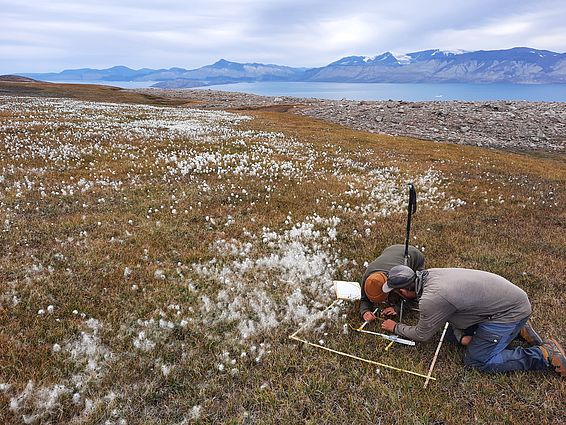The flora in the Alps is changing. As a result of climate change, temperatures are rising and plant species are pushing up from the valleys to higher altitudes, where they may displace existing species.
Temperatures are rising in the Alps, and plants are spreading to higher altitudes. This is changing biodiversity at these elevations, which in turn has consequences because the type and number of plants there determines, among other things, the amount of carbon stored in the soil. This not only has an effect on how well they grow – it also has a direct impact on the climate.
With a view to establishing how the vegetation will change if it gets even warmer, SLF researchers set up warming chambers in the mountains. Inside these hexagonal Plexiglas structures the temperature is between one and three degrees Celsius higher than outside. This is a way for the scientists to simulate climate change. By comparing the vegetation inside with that outside, they can get some idea of how climate change will alter the flora in colder regions.
The measurement results have now been confirmed by the lapse of time, because this project has been running since the 1990s. Today it is warmer outside the chambers than it was inside in that period. The data shows that the plants grow better when it is a bit warmer, ending up not only taller and denser but with more leaves. In addition, more competitive species have extended their range. Most of the small, alpine specialists are still there, but this could change in the long term.
Variation of predators
It is still unclear what consequences climate change will have for predators' effect on plants. SLF researchers are looking at slugs and snails, insects and fungal diseases in this regard. If there is a change in species or their volume, this could also affect the biodiversity of the plants in a mountain meadow, because predators are responsible for what is now the normal mix of yellow buttercups, blue gentians, light-blue forget-me-nots and many others. Researchers at three locations in Davos are investigating how this mix changes when predators disappear or when their numbers increase. These are at different altitudes, so that scientists also get an idea of what will happen if global temperatures rise.
Long-term altered plant mix
Data from Greenland also provides evidence of the consequences of climate change for biodiversity. Here, SLF staff repeated two historical expeditions by botanists, using the same methods as their predecessors. The aim is to determine how the plant mix has changed in the intervening years, whether this change is accelerating and which plant species are the winners and which are the losers from climate change.
Previously published in this series:
- Part 1: Climate change and… winter sports
Contact
Media Office SLF
- Telefon: +41 81 417 01 90
- E-Mail: medien(at)slf.ch
Links
- International Tundra Experiment ITEX
- Climate change effects on plant-enemy interactions
- Travelogue Greenland
Copyright
WSL and SLF provide image and sound material free of charge for use in press releases in connection with this media release. The use of this material in image, sound and/or video databases and the sale of the material by third parties is not permitted.


